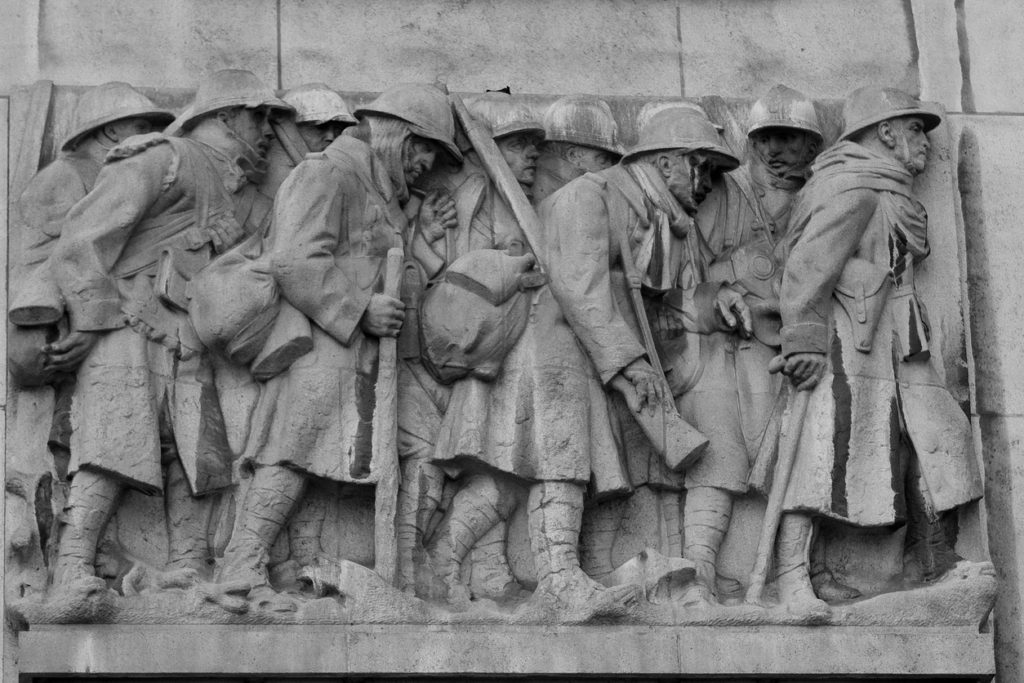
 SPRINGFIELD, Ill. (BP) – They called the holiday of December 1918 “the peace Christmas.” A truce had been declared. With the armistice announced, the shooting had stopped at 11 a.m. on Nov. 11. Although the agreements to end The Great War were not yet signed, the world sighed relief that the confrontation that had consumed Europe and left 18 million dead had ended. Back home, wives and fathers and sisters and mothers hoped their valiant surviving men would be home by Christmas.
SPRINGFIELD, Ill. (BP) – They called the holiday of December 1918 “the peace Christmas.” A truce had been declared. With the armistice announced, the shooting had stopped at 11 a.m. on Nov. 11. Although the agreements to end The Great War were not yet signed, the world sighed relief that the confrontation that had consumed Europe and left 18 million dead had ended. Back home, wives and fathers and sisters and mothers hoped their valiant surviving men would be home by Christmas.
Here on the home front, another war was still raging – the Spanish Influenza. The first wave swept the country starting in March and subsided a bit in the summer, only to be reborn in August. The second wave peaked a few weeks before Christmas. A Knoxville newspaper reported its last flu victim that year was a prominent merchant who died December 15. But flu still raged in pockets, especially in rural areas, and Christmas promised to be somber, with plenty of loss to be grieved.
Christmas was almost unknown as anything but a religious occasion until late Victorian times. Then, within a few decades, it grew to become a brief but jubilant eruption at year’s end. It had come to be a raucous event until what we now call World War I.
Then the prohibition movement emerged. And with the U.S. entry into the fight against Germany and her allies, the celebrations of 1916 and 1917 were scaled back. By 1918, many would have wondered if there would be much Christmas at all. Life had been greatly reduced by war, and the costs in goods and men were compounded by the pandemic.
Large crowds were discouraged after parades in St. Louis and Philadelphia were identified as “super-spreader events” (our words, not theirs). Congress signed a wartime prohibition one week after the Nov. 11 truce, and many Americans were joining Baptists in eschewing alcohol. Telegrams said the boys were still needed to preserve the peace in Europe. They would not make it home for the holidays.
In the grim uncertainty following round two of “the pestilence,” as Illinois Baptists identified the deadly flu in their 1918 record, Christmas would be quiet.
Some observers of the time say that’s when Christmas moved from the streets to the home – and to the church. The shopping season had been announced in October, rather than the few days before the holiday, because of concerns that supply lines would prevent timely deliveries. Trees arrived in market squares a couple of weeks early, stretching the evergreen season inside houses.
And with the invention of commercial radio still a couple of years off, there was little to do but eat a modest dinner, open a few small gifts, pray for troops and loved ones absent and consider the tumult of the year soon concluding.
Throw in some Netflix binging, and many of us may do the same home-style holiday this year.
The question is whether as a nation, we will be more likely to keep Christ at the center of Christmas when there’s a lot less folderol to obscure His place.
The Sundays in December and Christmas Eve are among my favorite worship services. I love to plan them, preach them, sing them, attend them. I love to share the Gospel with the part-time members and the adult children whose parents coerce them to attend during their visit home.
But I’ll have to find other ways to celebrate while we’re mostly at home for the holidays. I can honestly say, there will be nothing to take my eyes off Jesus this Christmas.
This may be the year we all find what so many are searching for – the real meaning of Christmas. In the quiet not found in parades and stores and airports and crowded dining rooms, we might be silent long enough to hear from the Prince of Peace.
And he shall stand and shepherd his flock in the strength of the LORD,
in the majesty of the name of the LORD his God.
And they shall dwell secure, for now he shall be great to the ends of the earth.
And he shall be their peace.
– Micah 5:4-5a















